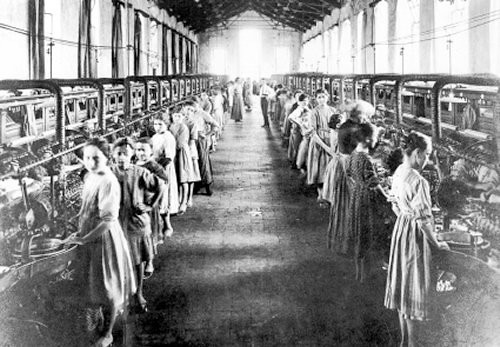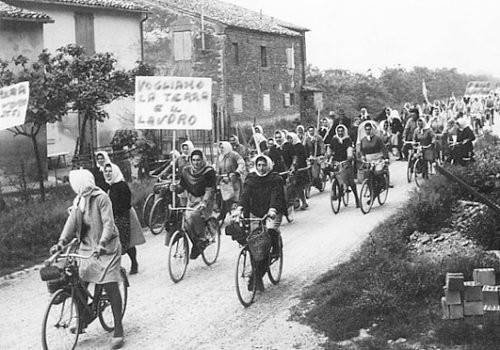International Women's Day
Celebrated across the world, Women's Day is a very popular holiday celebrated on March 8th. It is a day on which to celebrate women's economic, political and social achievements. Its roots lie in the feminist struggle for equal rights and recognition of the dignity, value and contributions of women worldwide in every area of society.

International Women's Day first emerged from the activities of labour movements at the turn of the twentieth century in North America and across Europe. The holiday began as a day of memory and protest following a tragic event in New York in 1908.
In early March of that year, the workers (all women) at a textile factory went on strike to protest the substandard conditions in which they were forced to work. On the 8th, the owner blocked all of the exits to the factory and set the building on fire. The 129 factory workers trapped inside, for the most part Italian immigrants, all died.

While the history of Women's Day illuminates the importance of women, their important contributions to the betterment of our society, and their sacrifices, today, in Italy, the celebration has become more similar to Mother's Day or Valentine's Day - "La Festa della Donna".
Women receive bouquets of mimosa flowers from the men in their lives, bakeries fill their shelves with "Torta Mimosa" and you can expect risotto mimosa, tagliatelle mimosa, or mimosa eggs for dinner.
This flower was chosen by Italian feminists as the symbol of the holiday in 1946, to mark the first occasion of the holiday after the end of World War II. It was chosen because of its bright color and fragrant scent, and because it is in bloom at this time of year and is inexpensive.
Some feminist movements complain that the day has become too commercial and has lost its political ideology. I say, let's come together and celebrate being women! Bring on the mimosa's!
Some feminist movements complain that the day has become too commercial and has lost its political ideology. I say, let's come together and celebrate being women! Bring on the mimosa's!
- 1909: The first National Woman's Day was observed in the United States on 28 February. The Socialist Party of America designated this day in honour of the 1908 garment workers' strike in New York, where women protested against working conditions.
- 1910: The Socialist International, meeting in Copenhagen, established a Women's Day, international in character, to honour the movement for women's rights and to build support for achieving universal suffrage for women. The proposal was greeted with unanimous approval by the conference of over 100 women from 17 countries, which included the first three women elected to the Finnish Parliament. No fixed date was selected for the observance.
- 1911: As a result of the Copenhagen initiative, International Women's Day was marked for the first time (19 March) in Austria, Denmark, Germany and Switzerland, where more than one million women and men attended rallies. In addition to the right to vote and to hold public office, they demanded women's rights to work, to vocational training and to an end to discrimination on the job.
- 1913-1914: International Women's Day also became a mechanism for protesting World War I. As part of the peace movement, Russian women observed their first International Women's Day on the last Sunday in February. Elsewhere in Europe, on or around 8 March of the following year, women held rallies either to protest the war or to express solidarity with other activists.
- 1917: Against the backdrop of the war, women in Russia again chose to protest and strike for "Bread and Peace" on the last Sunday in February (which fell on 8 March on the Gregorian calendar). Four days later, the Czar abdicated and the provisional Government granted women the right to vote.
- 1975: During International Women's Year, the United Nations began celebrating International Women's Day on 8 March.
- 1995: The Beijing Declaration and Platform for Action, a historic roadmap signed by 189 governments, focused on 12 critical areas of concern, and envisioned a world where each woman and girl can exercise her choices, such as participating in politics, getting an education, having an income, and living in societies free from violence and discrimination.
- 2014: The 58th session of the Commission on the Status of Women (CSW58) – the annual gathering of States to address critical issues related to gender equality and women’s rights
- focused on “Challenges and achievements in the implementation of the Millennium Development Goals for women and girls”
- UN entities and accredited NGOs from around the world took stock of progress and remaining challenges towards meeting the eight Millennium Development Goals (MDGs).
- The MDGs have played an important role in galvanizing attention on and resources for gender equality and women’s empowerment.
- 2015: Countries adopted the 2030 Agenda for Sustainable Development and its 17 Sustainable Development Goals. Goal 5 is “Achieve gender equality and empower all women and girls."
